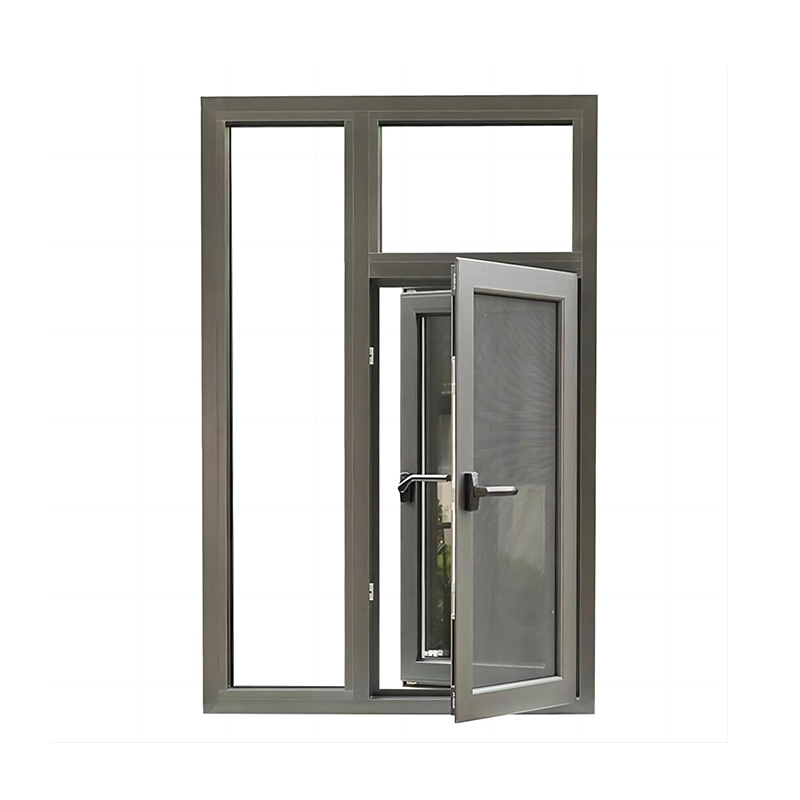Send inquiry
In the world of architecture and interior design, windows play an essential role in creating comfortable, energy-efficient, and aesthetically pleasing living spaces. Among the various types of windows available, aluminum casement windows stand out for their unique features, functionality, and versatility. One of the most notable benefits of aluminum casement windows is their ability to enhance ventilation and natural light in a room.
In this article, we will explore the key factors that make aluminum casement windows an excellent choice for improving both ventilation and natural light in any space. We will delve into how the design of casement windows, the properties of aluminum, and their performance in various settings contribute to a healthier and more comfortable living environment.
Before discussing how aluminum casement windows enhance ventilation and natural light, it is important to understand what they are and how they function.
Aluminum casement windows are hinged windows that open outward, usually on the side, similar to a door. They are operated using a crank mechanism, which allows the window to swing open and closed. The aluminum frame provides a strong, durable, and lightweight structure, while the casement design offers flexibility and ease of operation.
The key features of aluminum casement windows include:
These windows are particularly popular in modern architecture due to their sleek, contemporary appearance and their ability to provide a large, unobstructed view.

Ventilation is a crucial factor in creating a comfortable and healthy living space. Proper airflow can help maintain indoor air quality, regulate temperature, and reduce the buildup of humidity, which can lead to mold growth and other issues. Aluminum casement windows excel in providing efficient and controlled ventilation for the following reasons:
One of the standout features of aluminum casement windows is their ability to open wide, offering more airflow compared to other window types. When opened, the window swings outward, allowing for unobstructed airflow into the room. This is particularly useful for promoting cross-ventilation, which helps cool down a room by allowing air to flow through and circulate freely.
This level of control over ventilation is particularly beneficial in spaces like living rooms, bedrooms, and kitchens, where good airflow is essential for comfort and health.
Unlike sliding windows or double-hung windows, which may have gaps around the edges when closed, aluminum casement windows have a tight seal when shut. This sealing mechanism allows you to control the airflow more effectively, ensuring that the window remains tightly closed during adverse weather conditions, such as rain or strong winds.
By keeping the room airtight when needed and providing a wide opening for ventilation when desired, aluminum casement windows give homeowners full control over indoor air quality.
The energy-efficient properties of aluminum, especially when combined with thermal breaks or insulated glazing, also contribute to better ventilation. Aluminum casement windows with proper insulation help maintain a consistent indoor temperature by preventing heat from entering or escaping. This contributes to passive cooling, allowing the home to stay cool during the summer months, even without air conditioning.
In areas prone to high humidity or moisture buildup, such as bathrooms and kitchens, good ventilation is essential to prevent the growth of mold and mildew. Aluminum casement windows can help reduce indoor humidity levels by allowing for easy moisture escape.
In addition to improving ventilation, aluminum casement windows are also an excellent choice for maximizing natural light in a room. Natural light has numerous benefits, including boosting mood, enhancing productivity, and improving the aesthetic appeal of a space. Here’s how casement windows contribute to a brighter, more inviting environment:
The design of aluminum casement windows allows for larger panes of glass compared to other window types. Since the aluminum frame is thinner and stronger than wood or vinyl, it can support larger glass panels, which means more natural light can enter the room.
This feature is particularly advantageous in small rooms, where maximizing natural light can make the space feel larger and more welcoming.
Unlike fixed windows, aluminum casement windows can be angled to optimize the amount of light entering the room. Since they open outward, you can adjust the angle of the window to let in more light at different times of the day.
The ability to open casement windows wide enhances the flow of daylight into the room by reducing obstructions and allowing light to reach all corners of the space. This is particularly beneficial for rooms with deep floor plans or narrow spaces, where other types of windows may block or filter the light.
Apart from improving ventilation and natural light, aluminum casement windows are also visually appealing. Their sleek, modern design enhances the curb appeal of any building, making them a perfect fit for both traditional and contemporary styles.
Aluminum casement windows offer a perfect combination of style, functionality, and performance. Their ability to enhance ventilation by allowing for wide openings, controlling airflow, and improving indoor air quality makes them an excellent choice for any home. In addition, the large glass panes of casement windows allow for the maximization of natural light, contributing to brighter, more inviting spaces.
By improving airflow and promoting the free flow of daylight, aluminum casement windows create a healthier, more comfortable living environment while enhancing the aesthetic appeal of your home. Whether you’re looking to reduce energy consumption, increase comfort, or simply enjoy the benefits of more natural light, aluminum casement windows are an excellent investment for modern living.